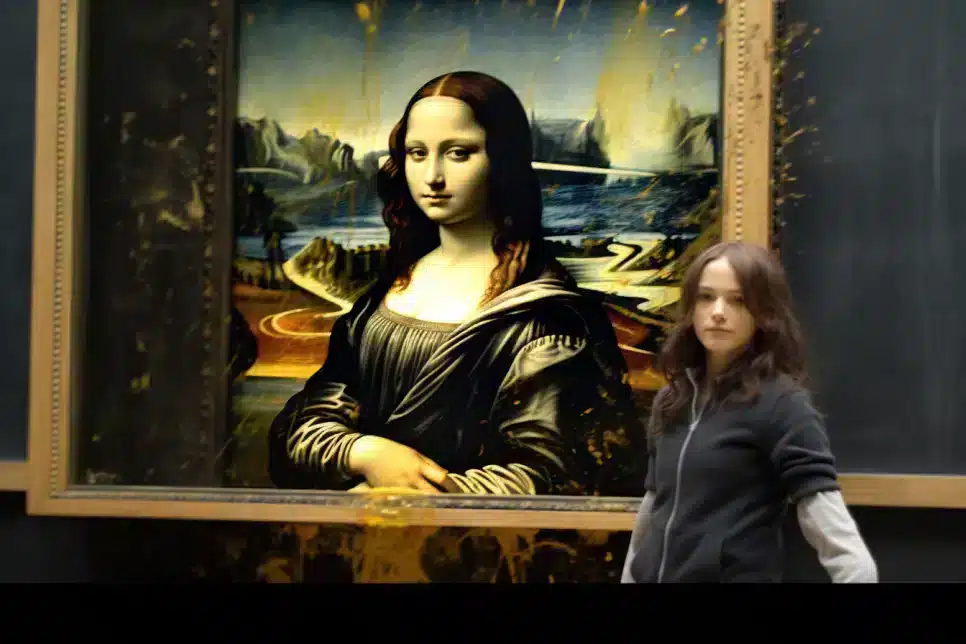In a bold protest that has captured global attention, the iconic Mona Lisa painting at the Paris Louvre Museum was targeted in an unusual assault when environmentalist protesters threw soup over Leonardo da Vinci’s masterpiece. Despite the initial shock, the painting, famed for its enigmatic smile and widely considered one of the world’s most valuable and recognized works of art, remained unharmed, protected by a transparent casing that safeguarded the piece from previous incidents of vandalism and theft.
The environmentalist group Riposte Alimentaire took responsibility for the incident, stating via X, formerly known as Twitter, that “two citizens involved in the new Riposte Alimentaire campaign sprayed soup over the world-famous ‘Mona Lisa’ painting on display at the Louvre Museum.” This action highlights the growing trend of using high-profile artworks to draw attention to environmental and social issues. However, it raises questions about the effectiveness and repercussions of such protest methods.
The Mona Lisa, a centrepiece of the Louvre collection, has been a subject of fascination and reverence over the years, drawing millions of visitors annually. Its history is dotted with theft attempts and acts of vandalism, including the 1911 theft that catapulted its global fame, an acid attack in the 1950s, and a 2009 incident where a ceramic cup was thrown against the protective glass, all of which have led the museum to implement increasingly stringent security measures to protect this Renaissance gem.
This latest soup incident not only reaffirms the vulnerability of artworks to acts of protest but also underscores the ongoing fascination and reverence toward the Mona Lisa, a work that, despite its small size, continues to impact global culture and art significantly.
While the Mona Lisa remains physically intact following this latest act of protest, the incident reflects the growing intersection between art, politics, and environmental activism. As cultural institutions face unprecedented challenges in the modern era, the resilience and enduring relevance of the Mona Lisa continue to inspire both admiration and debate.




